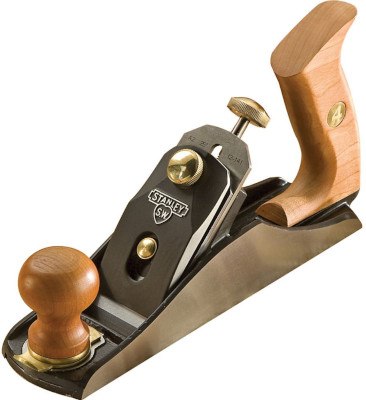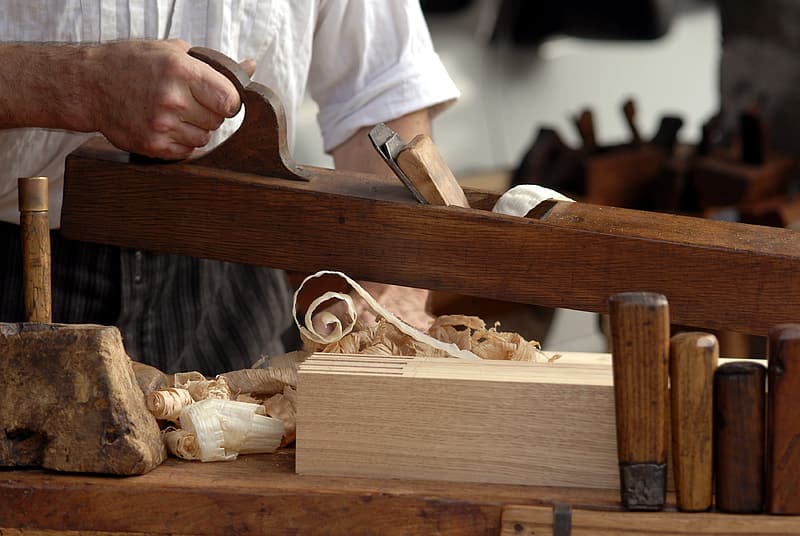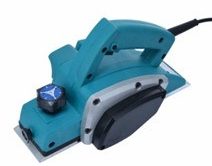Hand Planer vs Bench Planer: Which is Best for Your Needs?
-
- Last updated:


So, you’re working on a DIY project in your home and you need to bring some wood to a uniform level of thickness. But then, the dilemma strikes. What tool do I use? The good hand planer or the powerful bench planer?
Well, it all depends on you and what exactly you want to use it for. The hand planer has been a “fan favorite” for decades, proving useful in shaping, straightening, and smoothening woods. On the flip side of the coin, bench planer can be used for some heavy-duty tasks, which will be discussed later in this article.
Unless you are an expert in woodworking, all planers might be the same for you. But the truth is, they are not. In fact, there are at least 15 different types of planers to choose from, all with certain uses and applications, so there isn’t a “one-size-fits-all solution”.
So, how do you choose? We’ve condensed all the relevant information on this subject, along with an objective review of both tools. This way, you can reach a conclusive decision on your own.

Hand Planer Overview
Naturally, the first question that should pop up is, “What is a hand planer?”
A hand planer is a tool used during woodwork whereby the operator makes use of both hands, manual force, and a thin steel blade to flatten the edges and corners of wood. It can also be used to smoothen out frames accurately. The hand planer is to a carpenter what a wrench is to a plumber. You should get the picture by now.

When making use of it, grab the knob with one hand and the handle with another. This would supply you the grip and steadiness required to drive it seamlessly across woods. You can also adjust how deep its steel blade cuts through from the knob.
The handle planer is quite handy and can easily fit into a small tool kit. This way, you can easily take your tool to exactly where the work is.

When to Use a Hand Planer
There are two types of hand planers: a manual hand planer and an electric hand planer. With technology transforming tools all-around several industries, you didn’t think that the hand planer would escape it, did you? However, most woodworkers still prefer the manual one over the electric type.

- To achieve a smoother wood surface
- To trim off swollen corners of a stuck door
- To attend to smaller wood pieces with heightened accuracy
- To make radius cuts
- To create symmetrical slope-plane
- On parallel wooden surfaces such as tables, doors or frames
Apart from its multiple functions, the biggest advantage of a hand planer is its portability and ability to be used without any form of electricity or installation.
- Easy and portable to use
- The manual type can be used anywhere
- Requires no prior form of installation
- Injuries and accidents can easily occur from a wrong move
- Requires tremendous physical labor

Bench Planer
The bench planer, also called the table planer, is a tool that flattens uneven wooden surfaces. It is a perfect choice for bulkier wood. The bench planer easily smoothens surfaces, creating a better and much even surface.
Unlike, the bench planer is not a pocket-sized tool. On the contrary, it is rather heavy and doesn’t the portability of the hand planer. So, you might have to exercise more caution when attempting to carry one. Watch your back!

The bench planer comes in different sizes and widths. The wider ones have proven to get more done in a shorter time. A bench planer can range between 9 to over 22 inches in length. The most vital part of its construction is the sharp blade beneath it, slanted about 45 degrees, which makes all the sharpening and smoothening possible.

There are three main types of bench planer: the jointer, the smooth, and the jack plane.
The jointer is over 22 inches long, making it the biggest form of table planer. It is used for working on longer boards and tougher lumber work. The smooth planer is within 9 to 10 inches in length and is used to take out uneven spots on furniture. The jack planre is about 11 to 17 inches in length. It is your best plug for taking out those twists and edges on boards.
When to Use a Bench Planer
Your most effective use of a bench planer includes but not limited to:
- Can easily double as a sander
- Works perfectly on a chunk of lumber
- Best used on rough, edges or poorly shaped wood
It is one of the best tools when taking on DIY woodwork projects or home renovation plans. Compared to the hand planer, it has a wider surface and can produce more accurate results.
- Achieves more accurate results
- Works on poor wood and rough edges
- Best choice for chunky lumber
- It is heavy and cannot be easily moved about
- Might leave some rough edges
- Would cost you a lot more change than the hand planer
Other Factors to Consider
Apart from finding the befitting tool to for your job, here are a few other that must be at the back of your mind before making the final purchase:
- Expenses: Consider your budget. Bench planers are more costly than hand planers. So, if you must go with one, make sure you can afford it.
- Maintenance: When improperly stored or exposed to moisture, rust would begin to eat up the efficiency of your tool. Lubricate moving parts regularly and sharpen blades for optimum precision.
- Safety: How safe will you be with the tool you want to purchase? Consider these before buying any planer. Always use safety glasses and avoid working around children, pets, or persons with allergies.

So, Hand Planer or Bench Planer?
The choice, as well as the intent, is yours. The hand planer is ideal for achieving precision on smaller woodworks. On the other hand, the bench planer is a must-have for any significant carpentry project. They are both great tools and offer unique benefits.
We hope that from the explanations above, you are no longer confused as to identifying both tools. Now that you know which is which, simply go for one that would help achieve your desired piece.
Related Reads:
Featured Image Credit: Pexels
Contents

